Bugsy Siegel, Celebrity Mobster
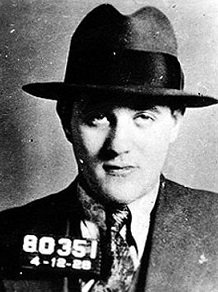
Bugsy Siegel, as he hated being called, was born Benjamin Siegel in New York in 1906. His parents were Jewish immigrants, though where they had immigrated from is debatable. Some sources say Austria, but most point to Letychiv, a small town in the Russian Empire. Wherever his parents came from, they had left due to facing constant persecution and harassment because of their ethnicity. Bugsy grew up knowing that the world was full of people who wanted to hurt him – unless he hurt them first.
Bugsy’s parents were poor, but honest. Early in his life, Bugsy decided that he would be neither. He gained a reputation for violence and crime, something he and his friend Moe Sedway turned to their advantage when they started running a protection racket on street cart vendors. The reputation was well deserved – Bugsy was known to have committed armed robbery, rape and even murder before he’d exited his teens. It was around this time that he picked up the nickname Bugsy (slang for “crazy”), which he always hated.
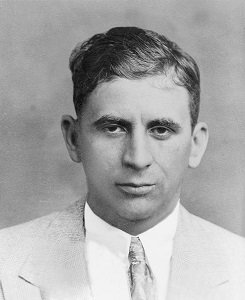
Though the New York criminal underworld of Bugsy’s teenage years was largely multi-ethnic, with him befriending many Irish and Italian gangsters, in the 1920s gangs began to form under ethnic lines. Salvatore “Lucky” Luciano was a pioneer of this, forming an all-Italian crime “family” to exploit the vast amount of money to be made under Prohibition. A young Polish immigrant named Meyer Lansky saw what Lucky was doing and decided to form a similar gang for the “Jewish boys” – mostly European immigrants like himself and their children who had fled from European persecution. He had met Bugsy when they were teenagers and they had impressed each other, so the pair agreed to form the “Bugs and Meyer mob”, with Bugsy as the muscle and Meyer as the brains. Meyer reached an agreement with Lucky Luciano that their two gangs would be allies and avoid stepping on each other’s toes. Lucky concentrated on prostitution and bootlegging, while Bugsy and Meyer dealt in more violent crime. Protection rackets with brutal reprisals for non-payment, hijacking trucks, armed robbery and contract killings were the order of the day. They also dealt in the transport of illegal liquor, something which helped them build up a network of criminal contacts across the USA.
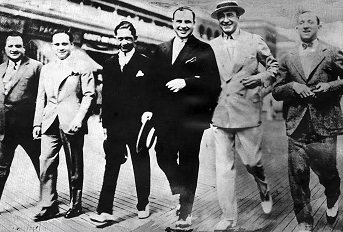
In January 1929 Bugsy married Esta Krakower, a seventeen year old girl from New York. [1] Esta may have been the sister of Bugsy’s subordinate Whitey Krakower, though there’s no solid evidence to corroborate this. In May of the same year Meyer was married, and he used his marriage as a pretext to arrange a meeting in Atlantic city between the various ambitious young crime bosses he had met over the last decade. The meeting was hosted by “Nucky” Johnson [2] and included gangsters from New York, New Jersey, Chicago, Boston, Kansas, Philadelphia, Detroit, Boston, Florida, New Orleans and Ohio. Notable attendees (in addition to Bugsy and Meyer) included Lucky Luciano, Al Capone, Dutch Schultz and Moses Annenberg. Notably not invited were the two most powerful mobsters from New York, Joe Masseria and Salvatore Maranzana. Also notably not invited were many of the powerful Irish crime bosses – they were generally seen as unstable, and an informal alliance was made between the Jewish and Italian mobs to begin freezing them out. The conference discussed many profitable deals and alliances at a national level – including dealing with the end of Prohibition by turning their bootlegging operations into legitimate liquor industries, and tying together their sporting and gambling operations. However the main reason for the conference was to bring an end to the bloody mob wars in New York and Chicago that had raged over the last decade, bringing unwanted attention to their operations. This was one of the reasons why Masseria and Maranzano were not invited – they were currently on the edge of waging just such a war in New York. Another was the generation gap – they were seen as the old guard, disparagingly referred to as “Mustache Petes”. The conference agreed that both of them would have to go. [3]
The “Castellammarese War” between Maranzano and Masseria broke out in 1930, and as agreed in Atlantic City the younger New York mobsters took advantage of it to eliminate them both. Lucky Luciano was historically a Masseria ally, but when the war began to run in Maranzano’s favour Lucky reached out to him and promised to take out Masseria if the Sicilian would end the war. Maranzano agreed, and so a group of hitmen (including Bugsy) walked into the back room of a restaurant where Masseria was playing cards and gunned him down. The victorious Maranzano then reorganised the shattered New York crime scene into five criminal families – all Italian, naturally. Himself he declared “capo di tutt’i capi” – the Boss of all Bosses. His victory lasted less than six months. In September of 1931 Bugsy led a team of Jewish hitmen who murdered the Boss of all Bosses in his office. [4] The “Mustache Petes” had been dethroned.
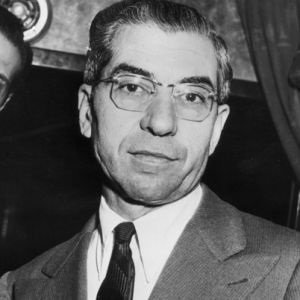
Lucky and his allies decided to keep the “Five Families” that Maranzano had established, but instead of a “boss of bosses” they created a governing commission consisting of the five bosses along with the heads of the Chicago and Buffalo mobs. Bugsy and Meyer weren’t on the Commission, but they were recognized as valued associates and allowed to operate in their territory. Meyer’s ambition had grown beyond New York, at any rate – he planned to go national. In association with Lucky, he kept the conversations that had started in Atlantic City going, creating what became known as the National Crime Syndicate. The enforcement arm of the syndicate was an organisation of assassins that the press dubbed “Murder Incorporated” for its use of an effective middle-management structure to insulate the crime bosses from the assassins they employed. It was initially formed by Bugsy Siegel, but he soon passed on control to the man who’s credited with coming up with the system, Lepke Buchalter. The Bugs and Meyer mob were headed for better things.
Meyer became hugely wealthy during the 1930s by getting into the casino business. His stroke of genius was to realise that the key to a successful casino was in scrupulous honesty, combined with vicious territoriality. The games in his casinos were 100% “straight” – he didn’t need to bend the odds in order to make huge profits, and the reputation ensured the gamblers came in droves. The territoriality was where Bugsy came in – ensuring that both the law and competitors didn’t try to take out the casinos. It was during this time that Bugsy suffered his only criminal conviction, being fined for “vagrancy” in Miami. As if to give the lie to the charge, he paid the $100 fine from a roll of bill s he took from his pocket.
Meyer was smart enough to avoid the trap that had caught Capone by laundering his money through offshore accounts, but others weren’t so smart. In 1933 he and Bugsy leaked the information to the IRS that resulted in the arrest and conviction of their rival Waxey Gordon for tax evasion. In retaliation Gordon hired Tony Fabrizio to murder Bugsy and Meyer. How this went down is disputed, but the most common story is that he tried to lower a bomb down the chimney of their office. Bugsy spotted the bomb and threw it out the window before it exploded. He then checked himself into a hospital for the injuries suffered in the explosion, but this was simply a ruse to give himself an alibi. Instead he and two associates tracked down Tony Fabrizio and killed him.
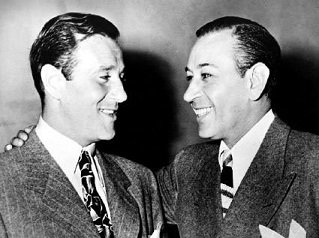
During the 1930s Bugsy travelled to California several times, looking to expand his operations onto the West Coast. Almost immediately he became a Hollywood darling. Bugsy was charming, witty and dangerous – exactly what the movie stars thought a gangster should be. In fact George Raft, an actor who had defined the movie version of the gangster protagonist, was a childhood friend of Bugsy’s from their days in New York. He was Bugsy’s ticket into the Hollywood glamour, while Bugsy in turn helped to give George serious credibility and box office draw. Bugsy soon became part of the Hollywood scene. The actress Jean Harlow was the godmother of Bugsy’s daughter Millicent, who was born in 1932. [5] Her step-father Marino Bello had connections to the Italian mob, and was another of Bugsy’s connections in Los Angeles.
Bugsy gloried in the celebrity lifestyle, but he was also in Los Angeles to work – which for him meant crime. The Hollywood labour unions were a good source of protection rackets, with payments being accepted against a threat of arranging a walkout or strike that could cripple a picture. The National Crime Syndicate’s racing wire scams, where they arranged to get the results of races on one side of America before the bookies on the other side and so clean up on bets, also had a key terminus in Los Angeles. Bugsy increased his personal wealth through a much more low-scale scam – he would pressure his Hollywood actor acquaintances, including the likes of Clark Gable and Cary Grant, into loaning him money. Of course, the Hollywood stars would never dare to demand repayment. Some biographers estimate that Siegel extorted $400,000 in this way from his celebrity “friends”.
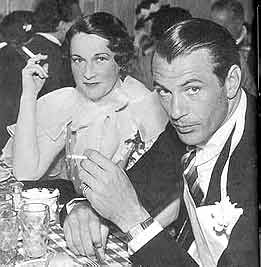
One of Bugsy’s most notable relationships in Hollywood was with Countess Dorothy di Frasso, an American heiress who had married into Italian nobility. She was estranged from her husband and lived a hedonistic life in Hollywood, with Bugsy only one of her several lovers. The pair had numerous adventures, one of the most notable of which was the infamous “Hell Cruise”. On board the Metha Nelson, an old three-masted schooner that was used in numerous period piece films, they headed to Cocos Island in the Pacific Ocean. This island was the rumoured location of the Treasure of Lima, the national wealth of the country of Peru which had been extracted from the capital by the Spanish colonists before the armies declaring independence could seize it. The treacherous Newfoundland captain and crew transporting it had killed the Spaniards on board and buried it on Cocos Island, but most of them had wound up being hanged for piracy and the treasure was lost. Bugsy and Dorothy led a mixed crew of LA socialites and New York street thugs on a three months sailing voyage to try and find the treasure. As one of the passengers wryly remarked: “We did a terrible lot of digging on the hot island and gleaned only a needed bit of exercise.” Tempers flared on the trip home, as the New York mobsters found the discipline of sea life at odds with their independent disposition. They accused the German captain of antisemitism, which he denied, but he wound up throwing two of the ringleaders off the ship in Guatemala. Bugsy tried to act as a peacemaker, but the captain saw this as a challenge to his authority and it only made matters worse. When a storm destroyed the main mast and left them adrift for a day before being rescued, Dorothy and Bugsy decided to cut their losses and drive back to LA from Mexico.
Amazingly, the “Hell Cruise” of the Metha Nelson was only the second most improbable trip that Bugsy and Dorothy took. In April 1939, on the eve of World War II, the pair took a trip to Italy. There Bugsy attended a reception held by the Pope, and was introduced to Mussolini and several other top Italian politicians. He seems to have got on well with them, though the same cannot be said for another visitor who was there at the same time – Hermann Goering. Unsurprisingly the Jewish Bugsy was not a fan of his, and in fact became so angry with him that he later told his daughter that he wished he had shot him. Still, as fantastic as this intersection of two worlds is, it’s not as fantastic as the claim that the reason for Bugsy and Dorothy’s trip was to sell a new miracle explosive named “atomite” to the Axis powers. (Stories vary as to whether is was a scam or a genuine attempt.) Outlandish as this seems, diary entries from Mussolini’s son-in-law do seem to back it up. If so, it was definitely something Bugsy kept quiet when war broke out.
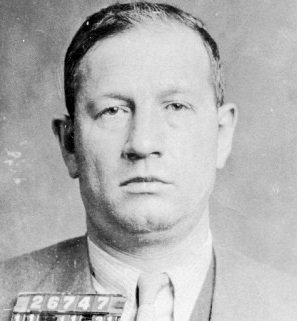
Bugsy had his own problems later in 1939, and they came in the form of Harry Greenberg. Greenberg had threatened to become an informant to Thomas Dewey, the New York District Attorney who was on a crusade against organised crime. Greenberg had fled to Los Angeles, and Murder Incorporated had followed to take him out. Bugsy, as the man on the ground, led a hit squad that included his (alleged) brother in law Whitey Krakower to take out Greenberg. He was gunned down outside his apartment in one of the first mob killing on the West Coast. The high profile killing did nothing to stymie Dewey. In 1939 he had a boost with the arrest of the man who had taken over Murder Incorporated from Bugsy, Lepke Buchalter. Buchalter had been indicted over the last few years on charges of heroin smuggling and, bizarrely, operating an illegal rabbit-skin monopoly in New York. He had gone on the run until 1939, when he eventually surrendered directly to J Edgar Hoover in a Maryland hotel. What Buchalter wasn’t counting on was a murder charge, but Dewey was able to get him charged with the Greenberg murder. News of this spooked one of the assassins, Allie “Tick Tock” Tannenbaum. Ironically while meeting one of Buchalter’s associates in order to get the funds to go underground, Tannenbaum was caught up in a raid targeted at the associate. The DA had enough evidence to convict Tannenbaum on at least one murder charge, but persuaded him to talk in exchange for clemency. His testimony put Lepke Buchalter in the electric chair, and was enough to get Bugsy Siegel arrested. However when one of the supporting witnesses, Abraham “Kid Twist” Reles, died mysteriously in police custody the case against Bugsy collapsed and he was released.
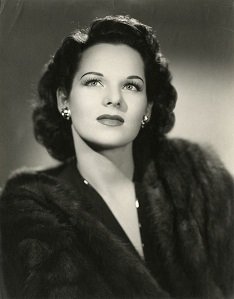
Bugsy may have avoided the death penalty, but enough details about his murderous activities came out in the press to ensure his social death in Hollywood. It was also the press coverage at this time that solidified the “Bugsy” nickname, which Siegel detested. Deprived of his social circles in Hollywood, Bugsy instead took up with an old acquaintance of his, Virginia Hill. She was an Alabama girl who had ran away from home at the age of seventeen, seducing a boyfriend into driving her to the 1933 Chicago World Fair. There she got a job as a waitress, but she soon found more profitable work as a messenger and collector for the mobsters. Her intelligence, beauty, discretion, and incredible talent for defusing tense situations all combined to make her one of the few women who could be described as a power in their own right within the world of organised crime, albeit a minor one. Bugsy was only one of many men she slept with to advance her position in Chicago, but when she moved out to California in 1942 they took up a more permanent relationship, one that soon superseded and replaced Bugsy’s marriage. Virginia had some hope of breaking into the movie business, but instead she wound up working as a fixer for Bugsy. Perhaps inspired by the success of his old partner Meyer Lansky on the East Coast, Bugsy was planning to go legitimate.
The war years had seen the establishment of an artillery school in Las Vegas, seeing the entertainment side of the town flourish in response. Nevada had legalised gambling in 1931, and the casinos in the city had attracted a steady flow of tourists. Bugsy was convinced that Vegas could eclipse Atlantic City and the East Coast casinos as a centre for gambling and tourism, and that casinos run on Meyer Lansky’s model could be enormously profitable for the mob. He had some trouble getting planning permission within the city limits, given his bad reputation, and so instead took over the construction of the Flamingo Hotel, which had run afoul of the post-war hike in the cost of construction materials. Unfortunately for Bugsy he fell afoul of the same increased costs, and his financiers were less inclined to be forgiving.

In 1946 Lucky Luciano organised a conference of mob bosses in Havana, Cuba. Though the prime purpose of the conference was to organise and divide up the post-War drugs trade into America, high on the agenda was what Meyer Lansky referred to as “the Siegel situation”. Bugsy, who had not been invited to Havana, had originally estimated the cost of the Flamingo at $1.5 million. By this point the true cost, which would reach $6 million, was apparent. Moreover the fact that Virginia Hill was making frequent visits to Switzerland made the bosses paranoid that she and Bugsy were skimming off the cost of construction. The delegates voted to have Bugsy Siegel killed and to take direct control of the Casino, but since the Flamingo was scheduled to partially open on December 26th, during the week of the conference, they decided to wait and see how the opening night went. When it turned out to be a flop they were going to go ahead with the hit, but Meyer Lansky persuaded them to give Siegel a chance to complete construction and see if he could turn a profit. The hotel opened properly in March, and did indeed prove to be a solid venture – within two months it had made back $250,000 of the original investment. However that may not have been enough to save Bugsy.
The facts of Bugsy Siegel’s death are relatively simple. At 10.30pm on the 20th June 1947, while he was sitting on the sofa reading a newspaper in Virginia Hill’s bungalow in LA, Bugsy was shot multiple times with an M1 carbine through the window. The weapon, the same one issued to World War 2 servicemen, hit him twice in the head killing him instantly and mutilating his features. Virginia had left the country four days earlier, in an unscheduled trip to Paris, and most assumed that she had been tipped off to his impending murder. The very next day Bugsy’s old childhood friend Moe Sedway and another mobster named Gus Greenbaum walked into the Flamingo with papers to assume ownership. Bugsy was buried in a closed casket within a few days, and nobody but his relatives came to the funeral.
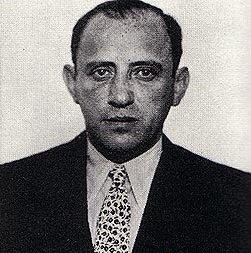
For many years the general assumption was that the Flamingo financiers had arranged Bugsy’s death, and that still remains the most likely scenario. Though the Flamingo had begun turning a profit, if they had thought he was embezzling funds they would show no mercy. Gus Greenbaum would learn that the hard way in 1958 when he and his wife were murdered in retaliation for him skimming the Flamingo’s profits. An alternative theory does put an interesting twist on proceedings though. A recently revealed Sedway family tradition was that Bugsy had taken an intense dislike to Moe, who had been forced to serve as the bearer of angry missives from the criminal Flamingo backers. With his position on firmer ground the word was that Bugsy planned to have Moe taken out – and so his wife Beatrice arranged for her lover Moose Pandza to kill Bugsy before he could order her husband killed. If so, it seems ironic that it was Bugsy’s impending return to the good graces of the mob bosses that prompted his death.
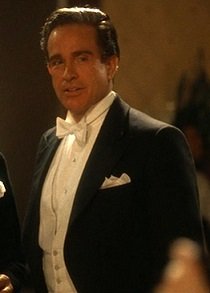
Meyer Lansky, whose success on the East Coast had inspired Bugsy, wound up investing heavily in casinos in Cuba in the 1950s. The communist revolution in 1959 wiped out his investments and left him penniless and out of the mob game. The other mob kingpins went on to wage bloody power struggles through the decades that followed, with Lucky Luciano winding up deported to Italy where he died of a heart attack in 1962. Virginia Hill wound up moving to Europe in the 1950s to avoid arrest, and eventually died in an apparent suicide aged 49. Even today, rumours persist that she was silenced because she knew too much about the dark underworld of crime. As for Bugsy, his violent death ensured his place in Hollywood history, and the eventual enormous success of the Flamingo and the other casinos it inspired saw him lauded as a visionary in Las Vegas. Throughout the decades his story has drifted into legend, glitz and glamour and bloody violence in the night. He’s appeared in and been the subject of many movies and novels, becoming the epitome of the celebrity gangster. His bloody death the perfect coda to a dark rags to riches tale, that began in the slums of New York City and ended with the smell of blood and gunpowder on a hot California night.
Images via wikimedia or the Mafia Wiki except where stated.
[1] Esta is often described as Bugsy’s “childhood sweetheart”, something which the five year age difference between them makes either ridiculous or just plain creepy.
[2] Familiar to any fan of the show “Boardwalk Empire”.
[3] The Chicago heat was reduced by Al Capone agreeing to being arrested and going to prison on a minor charge, allowing the forces of law and order to claim victory while he walked free only a year later.
[4] Ironically Maranzano had his own plan to murder Lucky Luciano the same day using another non-Italian hitman – the Irish gangster “Mad Dog” Coll. Coll was arriving for an appointment with Maranzano and met Bugsy and his gang leaving.
[5] The same year Jean’s husband Paul Bern was murdered in their home, though the death was officially declared a suicide.
